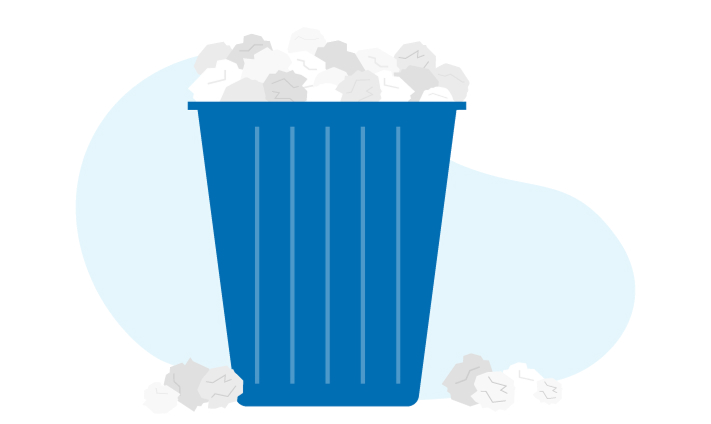First home
Your first home: What to know before and after buying
Buying your first home is a huge milestone. While it’s an exciting process, all the new information and choices can be overwhelming or even sometimes, unobtainable.
At Co-operators, we understand how important it is to plan ahead for home ownership and know how to navigate the process. To help you along the journey, we’ve put together some information so you can feel more prepared and move forward with confidence.
Before you buy
Need a little help saving for a down payment? First-time homebuyers can use the First Home Savings Account (FHSA), Tax Free Savings Account (TFSA), and Registered Retirement Savings Plan (RRSP) either separately or in combination to buy a home. These plans provide a great tax-advantaged way to save for your first down payment.
- The FHSA program was launched to help Canadians save towards their first home. As a tax-free savings account, it allows contributions of up to $8,000 per year, for a lifetime contribution total up to $40,000, towards a qualifying home purchase. The money you invest grows tax-free and your contributions are tax-deductible.
- A TFSA is a powerful savings tool that was designed to help Canadians save more throughout their lifetime. It offers flexible features and tax-free growth – two TFSA benefits that make this registered account one of the best and easiest ways to reach your financial goals. A TFSA can hold cash savings, as well as common investment vehicles like mutual funds and segregated funds. You pay no tax on the interest income, dividends or capital gains you earn within a TFSA and account withdrawals are also tax-free.
- An RRSP is a savings plan that you can contribute to over the course of your working life. When you retire, you can convert your account to a Registered Retirement Income Fund (RRIF) and withdraw an income. Or, you can treat your RRSP like a regular savings account by simply depositing the money and leaving it untouched until retirement. There are only two ways to withdraw money from your RRSP with no immediate tax implications: One is putting the money toward your first home through the Home Buyer’s Plan. The other is the Lifeline Learning Plan.
Setting up a pre-authorized contribution plan (PAC) is another way to help you reach your savings goals according to your timeline. With a PAC, the money goes directly into any of your investment accounts from your bank account. You can set up your PAC to suit your budget and schedule withdrawals when you get paid. To start, you can set up smaller pre-authorized contributions; when you’re ready to contribute more, you can invest a larger amount outside your accounts to meet your goal of home ownership.
After you buy
Congratulations, you did it! Now that you’ve moved into your new home, it’s important to protect your investment, as well as your lifestyle.
Here’s how:
- Home insurance covers basics like personal liability insurance to coverage like identity theft insurance, seasonal home insurance, water damage insurance and so on. It also helps cover the cost of repairing or replacing your home, attached and detached structures, outdoor swimming pools and items kept on the premises for damage caused by perils specified in your insurance policy. Your home insurance can also cover liability for accidental damage to someone else’s property.
- Mortgage life insurance ensures that if something were to happen to you, your family would be able to pay off the mortgage. Mortgage Guard® not only covers your mortgage if you die prematurely, but it can also help protect your family, home and standard of living while you recover from a serious illness.
- Critical illness insurance protects you if you’re diagnosed with a covered life-altering illness and suddenly unable to work. Critical Assist® provides you and your family with a tax-free lump-sum payout to help pay off a mortgage or loan; cover childcare and other day-to-day costs; subsidize additional healthcare; keep up TFSA, RRSP and RESP contributions; and so on.
- Our term life insurance provides flexible coverage for 1-, 10-, 15-, 20-, 25- or 30-year terms. Term life premiums can be initially lower than permanent life; however, they typically increase upon each renewal, while permanent life premiums stay the same. Permanent insurance, which includes whole life and universal life, is designed for lifelong financial protection, as long as the policy’s in force.
What else you should know
If you decide to use the first-time home buyer RRSP benefit to help with the down payment, you can borrow up to $60,000, tax-free, from your RRSP. To avoid tax penalties, you must repay the borrowed amount to your RRSP in equal increments over 15 years. Keeping up with your RRSP pre-authorized contributions, even if it’s in a lower capacity, will enable you to repay the money you’ve withdrawn.
Setting aside emergency funds is a smart way to be prepared for the unexpected. TFSAs are a good alternative to an RRSP to use for an emergency fund as they offer the flexibility to withdraw your money at any time without penalty. If you're in a low tax bracket, you can use the TFSA until you’re in a higher tax bracket and then make a transfer to an RRSP.
We’re here to help
If you’d like to know more about how Co-operators can support you as a homeowner and help you protect what matters, visit us at cooperators.ca or chat with one of our advisors today.
Not all products are available in all provinces. In Québec, a licensed insurance advisor is a Financial Security Advisor or a Representative. Mutual funds are offered through Co-operators Financial Investment Services Inc. to Canadian residents except those in Québec and the territories. Segregated funds and annuities are administered by Cooperators Life Insurance Company. Life insurance products are underwritten by Co-operators Life Insurance Company. This material is provided for informational purposes only. Please refer to your policy for applicable coverage details, limitations, and exclusions. Commissions, trailing commissions, management fees and expenses all may be associated with mutual fund investments. Please read the Fund Facts before investing. Unless otherwise stated, mutual fund securities and cash balances are not insured or guaranteed and are not covered by the Canada Deposit Insurance Corporation or by any other government deposit insurer that insures deposits. Their values change frequently and past performance may not be repeated. The information contained in this report was obtained from sources believed to be reliable; however, we cannot guarantee that it is accurate or complete. This report is provided as a general source of information and should not be considered personal investment advice or solicitation to buy or sell any mutual funds. The views expressed are those of the author and not necessarily those of Co-operators Financial Investment Services Inc. The information contained in this report was obtained from sources believed to be reliable; however, we cannot guarantee that it is accurate or complete and it should not be considered personal taxation advice. We are not tax advisors and we recommend that clients seek independent advice from a professional tax advisor on tax related matters. cooperators.ca | 1-800-454-8061. Co-operators Financial Investment Services Inc. and Co-operators Life Insurance Company is committed to protecting the privacy, confidentiality, accuracy and security of the personal information that we collect, use, retain and disclose in the course of conducting our business. Please visit our privacy policy for more information.
Mortgage GuardTM is a trademark of Co-operators Life Insurance Company. Critical Assist® is a registered trademark of Co-operators Life Insurance Company. Co-operators® is a registered trademark of The Co-operators Group Limited. © 2024 Cooperators Financial Investment Services Inc. © 2024 Cooperators Life Insurance Company





 Home
Home
 Auto
Auto
 Life
Life
 Recreation
Recreation

